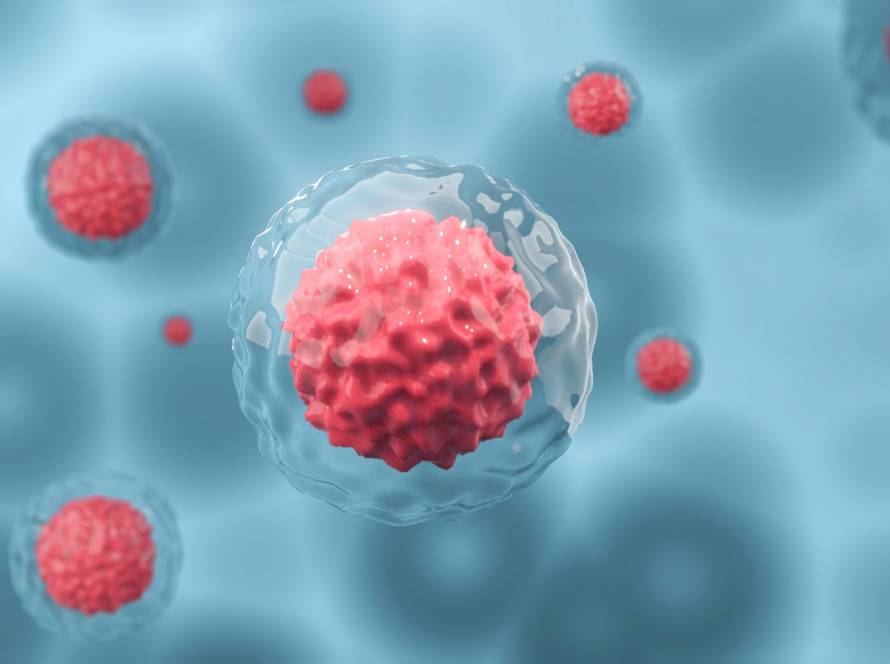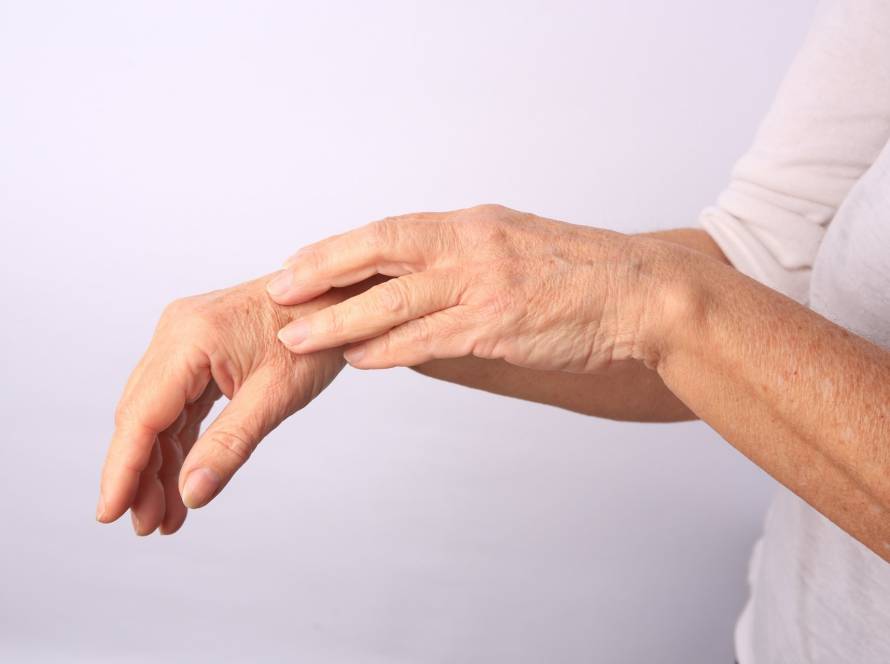Our bones do much more than just provide structural support, they act as endocrine organs that produce hormones affecting systems throughout the body.
This piece will take it through what is osteocalcin’s nature and functions. We’ll look at everything from its basic role in bone health to its surprising effects on metabolism, brain function and longevity.
What is osteocalcin and where is it produced?
Osteocalcin ranks as the most abundant non-collagenous protein in bone. It makes up about 10-20% of the non-collagenous protein fraction in human bone matrix. This small yet powerful 49-amino acid peptide plays vital roles beyond structural support.
A protein secreted by osteoblasts during bone formation
Osteoblasts exclusively produce osteocalcin while forming new bone tissue. The human body’s osteocalcin gene, BGLAP, sits on chromosome 1 at position 1q25-q31 and creates a 98 amino acid pre-pro-protein. The mature osteocalcin takes two paths: it either binds to hydroxyapatite crystals in the bone matrix or enters circulation.
Various hormones and growth factors control osteocalcin production, including 1,25-dihydroxy vitamin D. Osteocalcin’s secretion relates strongly to bone formation, making it a reliable biomarker to assess osteoblastic activity and bone turnover.
Exists in carboxylated and uncarboxylated forms
Osteocalcin comes in two main forms with different functional properties. The fully carboxylated form (cOC) binds strongly to calcium and hydroxyapatite, which leads to its incorporation into bone matrix. The undercarboxylated form (ucOC) shows less attraction to bone minerals and moves more freely in circulation.
40-60% of total circulating osteocalcin exists partially or completely uncarboxylated. This circulating ucOC regulates energy metabolism, fertilization and cognitive functions.
Vitamin K dependent post translational modification
The transformation between these forms depends on vitamin K. After protein synthesis, osteocalcin undergoes changes where three glutamic acid residues at positions 17, 21 and 24 receive γ-carboxylation.
This process needs vitamin K as a key cofactor for the enzyme γ-glutamyl carboxylase (GGCX). Each carboxylation cycle turns vitamin K into an epoxide form. Vitamin K epoxide reductase must then convert it back to participate in more carboxylation.
The protein’s carboxylation status determines its function. Carboxylated osteocalcin manages bone mineralization by attaching to hydroxyapatite crystals. The undercarboxylated forms act like hormones throughout the body.
Scientists use undercarboxylated osteocalcin levels as a sensitive marker for vitamin K nutrition in humans. These levels respond to changes in dietary vitamin K intake, including depletion, repletion and supplementation. The ratio between undercarboxylated and carboxylated osteocalcin (UCR) serves as the best indicator of bone vitamin K status.
Osteocalcins role in bone health and mineralization
The relationship between osteocalcin and bone mineralization stands as a key function of this bone derived protein. Osteocalcin does more than just exist in the skeletal system. It takes an active role to maintain bone quality and structure.
Binds to hydroxyapatite in bone matrix
Osteocalcin’s carboxylated form shows a strong attraction to calcium ions and hydroxyapatite crystals, the main mineral component of bone. The protein’s binding ability comes from its γ-carboxyglutamic acid (Gla) residues, which create calcium-binding sites. This mechanism allows osteocalcin to blend into the bone matrix, where it accounts for about 1-2% of the total protein in bone.
The protein’s distribution in bone tissue follows a specific pattern. It clusters at the boundary between mineral crystals and the organic matrix, which suggests it helps these two vital bone components interact.
Regulates bone mineral maturation
Osteocalcin substantially affects how hydroxyapatite crystals grow and arrange themselves. Research shows it might stop mineral crystals from forming too early. This negative regulation will give a proper crystal size and orientation.
Osteocalcin adds to bone quality instead of quantity. Studies of osteocalcin deficient mice showed they develop bones with higher mineral content and brittleness. These findings prove that osteocalcin helps keep the balance between flexibility and strength in healthy bone tissue.
Used as a marker for bone formation
Blood levels of osteocalcin work as a valuable clinical marker to check bone turnover and formation. Higher blood concentrations usually associate with increased osteoblast activity and new bone formation. Doctors find these measurements especially useful to track osteoporosis treatments, check fracture healing, and evaluate metabolic bone diseases.
Osteocalcin levels offer live insights into ongoing bone remodeling. Combined with bone resorption markers, osteocalcin helps doctors create a detailed picture of skeletal metabolic activity. This understanding leads to better management of bone-related conditions.
Osteocalcin as a hormone: metabolic and endocrine functions
Scientific evidence shows osteocalcin works as a true hormone that affects many body systems beyond its bone-related roles. The uncarboxylated form drives these metabolic and endocrine activities, which makes bone an active endocrine organ.
Regulates insulin secretion and sensitivity
Research shows osteocalcin boosts insulin secretion by stimulating pancreatic β-cells directly and helps insulin gene expression. It also makes peripheral tissues like skeletal muscle and adipose tissue more sensitive to insulin. Studies found diabetic patients had much lower osteocalcin levels (7.07 ± 3.80 ng/mL) than control groups (20.41 ± 13.50 ng/mL). Strong negative associations exist between osteocalcin and both HbA1c (r=-0.7) and fasting blood sugar (r=-0.6).
Influences fat storage and energy metabolism
Mice without osteocalcin develop more visceral fat and struggle with glucose metabolism. On the flip side, mice with higher osteocalcin activity resist weight gain even with high-fat diets. This metabolic control happens in part because osteocalcin tells fat cells to release adiponectin, which makes insulin work better. Clinical studies keep showing that people with higher serum osteocalcin have lower BMI and smaller waist measurements.
Supports testosterone production in males
The fascinating thing about osteocalcin is how it controls male fertility. It stimulates testosterone production in Leydig cells through a path that bypasses the usual hypothalamic-pituitary-gonadal axis. This process needs the GPRC6A receptor, found in many tissues but not in ovaries. Male mice lacking osteocalcin end up less fertile, with smaller testes and much less testosterone, even though their LH levels are high, according to research. Human studies show testosterone levels associate with osteocalcin (bone age-adjusted r = 0.30), especially during rapid bone growth.
Impacts muscle mass and exercise capacity
Osteocalcin levels in blood double during exercise right as insulin levels drop. It signals myofibers to take up and break down glucose and fatty acids, which helps the body adapt to exercise. Giving mice extra osteocalcin boosts their exercise capacity. It even helps 15 month old mice exercise like 3 month old ones, according to studies. It also stops age related muscle loss by helping protein synthesis without changing how protein breaks down.
Emerging roles: brain function, aging and disease links
Scientists have found that this bone derived hormone does much more than regulate metabolism, it plays key roles in brain function and disease.
Crosses the blood-brain barrier and affects cognition
Research shows osteocalcin easily crosses the blood-brain barrier and builds up in the brainstem, midbrain, and hippocampus. When it binds to neurons in these areas, it boosts the production of monoamine neurotransmitters like serotonin, dopamine and norepinephrine, while blocking GABA synthesis. These changes in brain chemistry lead to striking behavioral effects. Mice without osteocalcin show more anxiety and struggle with spatial learning and memory. The impact is remarkable, osteocalcin has one of the strongest known influences on spatial learning and memory compared to other hormones from outside the brain.
Potential role in neurodevelopment and memory
The mother’s osteocalcin starts crossing the placenta between E14.5 and E15.5, right when the hippocampus is developing. This timing is crucial as it helps prevent brain cell death in the fetal hippocampus and sets up the foundation for future cognitive abilities. The physical evidence is clear, mice that lack osteocalcin have smaller brains than their normal siblings, and their hippocampal dentate gyrus is about 30% smaller, according to research. At the cellular level, osteocalcin works through Gpr158 receptors in hippocampal CA3 neurons and uses inositol 1,4,5-trisphosphate and brain-derived neurotrophic factor pathways.
Linked to prostate cancer and tumor progression
The link between osteocalcin and disease goes beyond the brain and into cancer, particularly prostate tumors. While osteocalcin RNA shows up in most prostate tumor cells whatever their spread, we find the actual protein mostly in prostate tumors that have spread to bone. This happens because bone-derived prostate cancer cells process osteocalcin RNA more completely. Blood levels of osteocalcin rise in patients whose prostate cancer has spread to their bones, which could help doctors track the disease.
Declines with age and may serve as a longevity biomarker
Blood osteocalcin levels drop as we age, and this matches the decline in brain function. Scientists found that giving older mice uncarboxylated osteocalcin through mini osmotic pumps for 60 days helped their cognitive function. Young mouse plasma can boost cognitive function in 16-month-old mice, but only if osteocalcin is present, according to studies. This suggests that osteocalcin could help track aging and might be a target for treating age-related cognitive decline.
Osteocalcin stands without doubt as one of the most fascinating examples of how our skeletal system works way beyond its structural role. In this piece, we explored how this remarkable bone derived hormone influences multiple body systems. It affects everything from glucose metabolism and insulin sensitivity to brain function and muscle performance. The evidence shows that osteocalcin levels drop with age, so this affects cognitive function, metabolic health and physical capacity.


